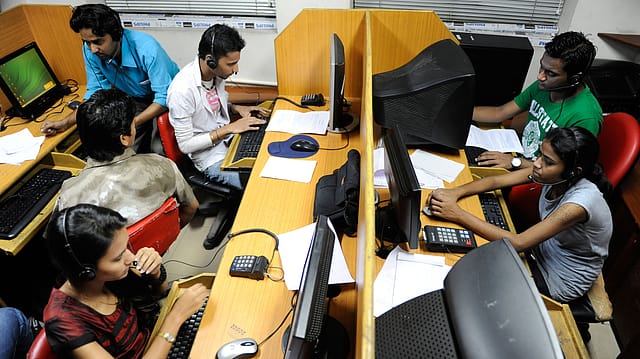No magic bullet to solve jobs problem
ADVERTISEMENT

Despite the recent debate over ‘pakoranomics’ and India’s jobs situation, it seems unemployment data for April leaves much to be desired. According the Centre for Monitoring Indian Economy (CMIE), the employment rate in April 2018 was 40.7%, only marginally better than 40.5% in March, the lowest employment rates since January 2016. CMIE data also showed the total unemployed workforce stood at a whopping 35 million.
Offering a sliver of hope in the face of these rather grim statistics was a report by human resources consultancy TeamLease Services released in March which said the sales space had the potential to create 2.5 million jobs in three years.
It said this number could rise to 10 million if 10 labour law reforms are successfully implemented. The reforms include the codification of 44 labour laws, Unique Enterprise number to replace numbers like PF, ESI, PAN etc ,and a paperless, presence-less and cashless compliance portal. The report went on to say organised retail could contribute 50% to job creation while FMCG and consumer durables could account for 30%.
“If the government expedites the labour law reforms and creates enough awareness around sales jobs in various sectors, then the sales domain could help bail out the country with respect to its jobs problem,” said Rituparna Chakraborty, executive vice president & co-founder, TeamLease Services. “We need to stop thinking of sales jobs as a last resort. The opportunities are there, we just need to skill the labour force for these roles,” she said, adding that sectors like tourism and organised retail face a 65% deficit when it comes to sales roles.
January 2026
Netflix, which has been in India for a decade, has successfully struck a balance between high-class premium content and pricing that attracts a range of customers. Find out how the U.S. streaming giant evolved in India, plus an exclusive interview with CEO Ted Sarandos. Also read about the Best Investments for 2026, and how rising growth and easing inflation will come in handy for finance minister Nirmala Sitharaman as she prepares Budget 2026.
According the Centre for Monitoring Indian Economy (CMIE), the employment rate in April 2018 was 40.7%, only marginally better than 40.5% in March, the lowest employment rates since January 2016.
However, experts are sceptical about the report’s projections. Former RBI governor C. Rangarajan says a pickup in economic growth and investment is more important than labour law reforms. “Changes in labour laws can help, but only new investment can result in growth that acts as a bigger jobs multiplier. We are witnessing a sharp decline in investment rates, down from 33% levels to around 27%,” he said, adding that the sooner India finds a solution to the NPA problem, the quicker the pace of investment will rise.
Mahesh Vyas, MD & CEO of CMIE, echoed Rangarajan’s views. “There is no magic bullet in terms of policy that can aid job creation. If labour law reforms are carried out but investment doesn’t improve, it will not help job creation in any significant way. Also, the labour laws need to become more flexible in terms of hiring and firing employees while safeguarding their rights at the same time,” he said. Vyas added that he sees the investment cycle picking up in two-three years.
Another industry expert, who wished to remain anonymous, said the 10 reforms may never see the light of day as implementing any reform in India is tough given the political aspect of these processes. Experts also said that addressing the skill gap that arises from tech disruption, which makes unskilled jobs obsolete while creating highly skilled jobs, was critical.
Another area the government could focus on is providing tax breaks to labour-intensive sectors like textile, leather, and jewllery. “A GST rate like 8%, which is an in-between rate, could be rolled out for all labour intensive sectors. This could provide some relief to the employers in these sectors and encourage them to hire more employees,” said M.S. Mani, partner at Deloitte India.
However, former chief economic advisor Arvind Virmani had a different view. He said the investment cycle actually picked up 9-12 months ago, given the acceleration in the growth rate of real gross fixed investment over the last three quarters. "Labour law reforms will undoubtedly provide an incentive for labour-intensive production and faster growth of employment. The precise number of extra jobs that any specific reform will create is difficult to estimate. Overall and over a period of time job creation will certainly accelerate. Given the heightened risks to FDI in China, the timing is very apposite for a shift of labour-intensive exportable production from China to India," he added.
With crucial state elections around the corner and the 2019 general election drawing nearer, the question of job creation will continue to feature as a burning issue for months to come. And it seems unlikely the government will not take significant steps, but it remains to be seen which parts of the puzzle they will choose to move.
